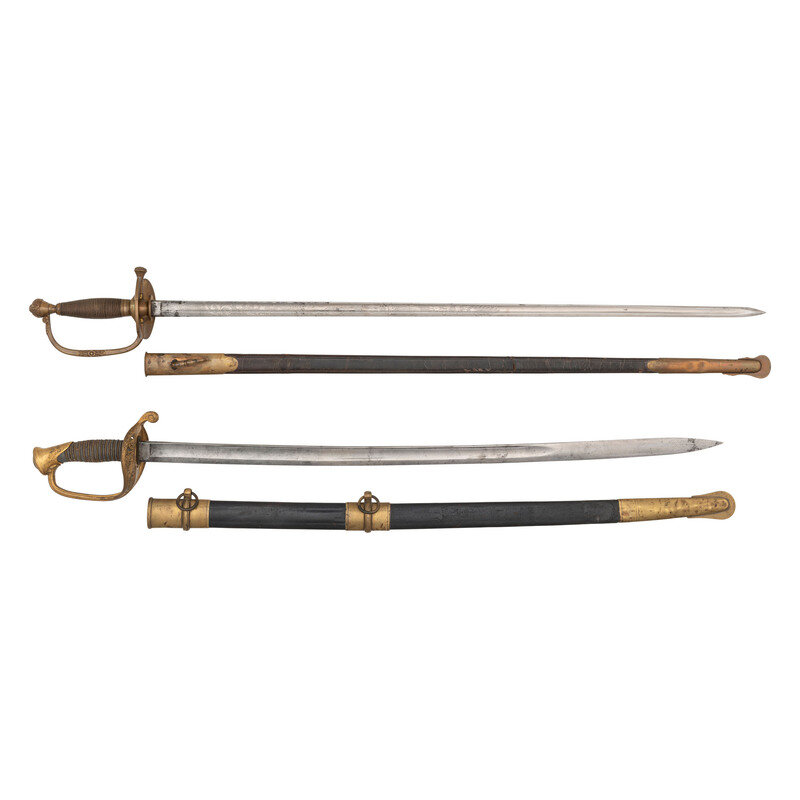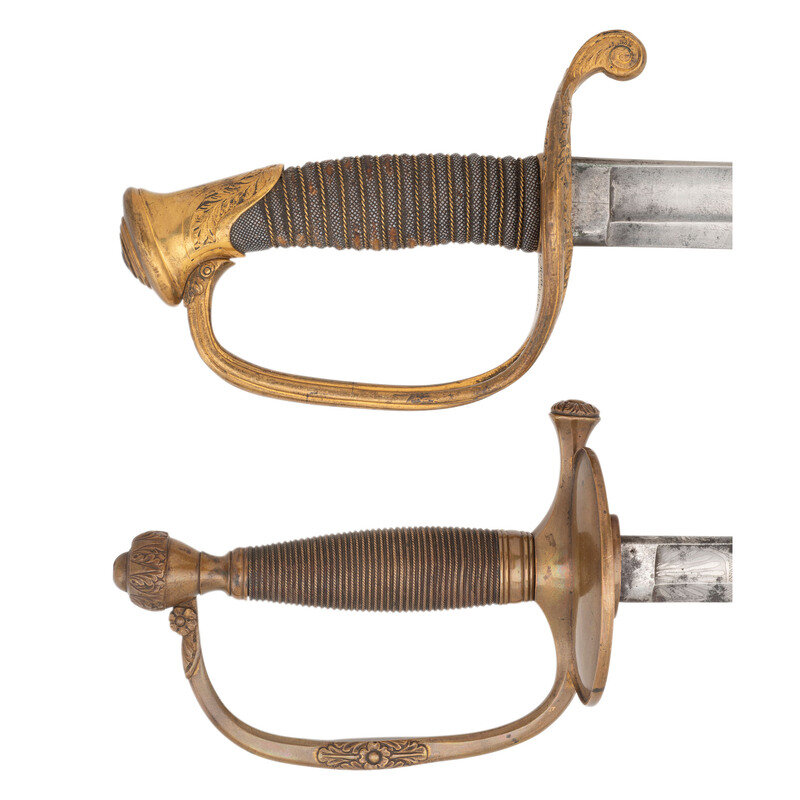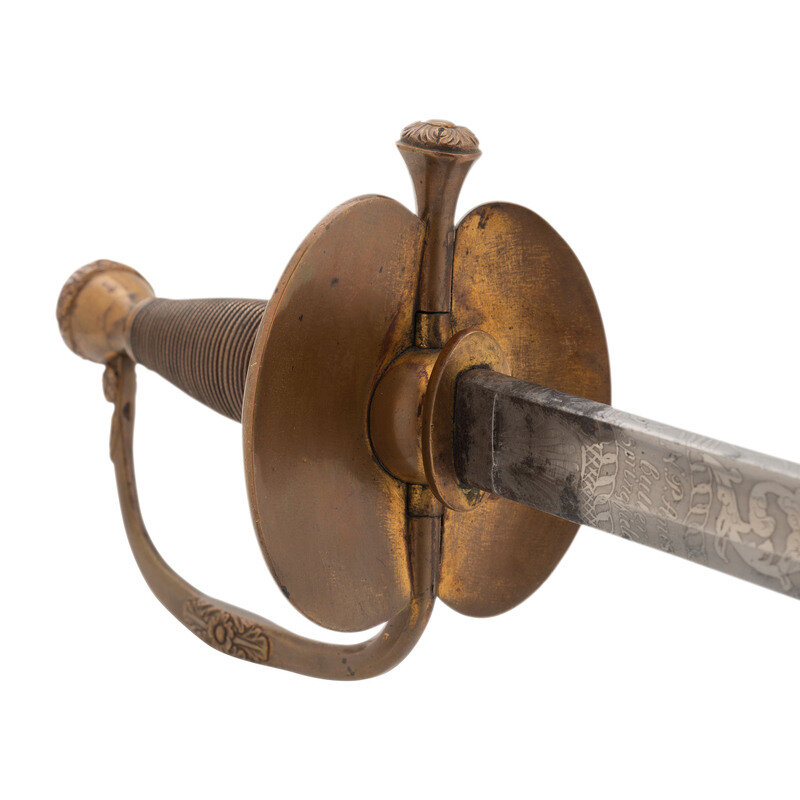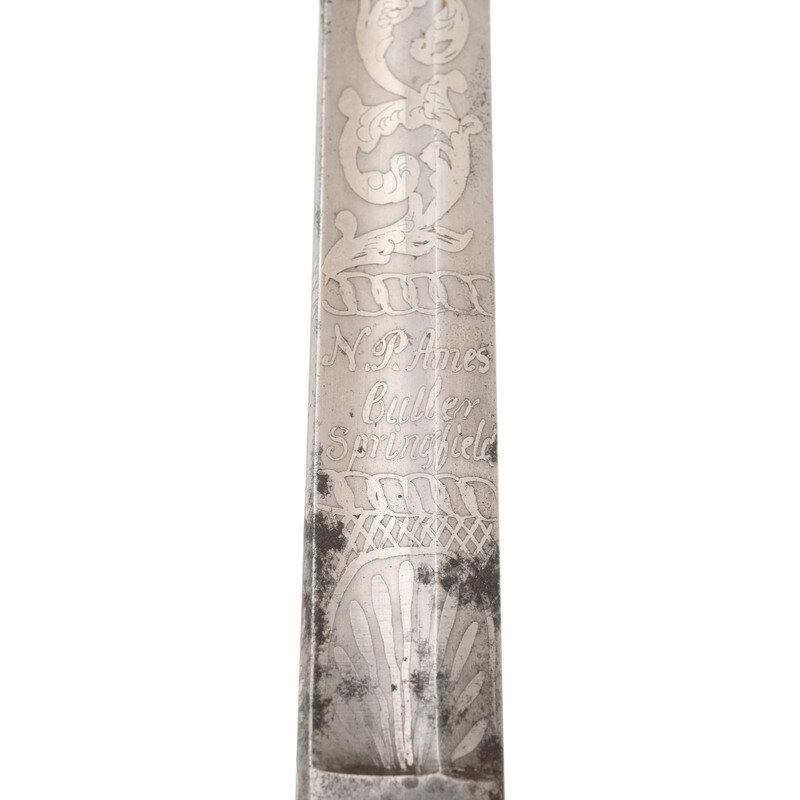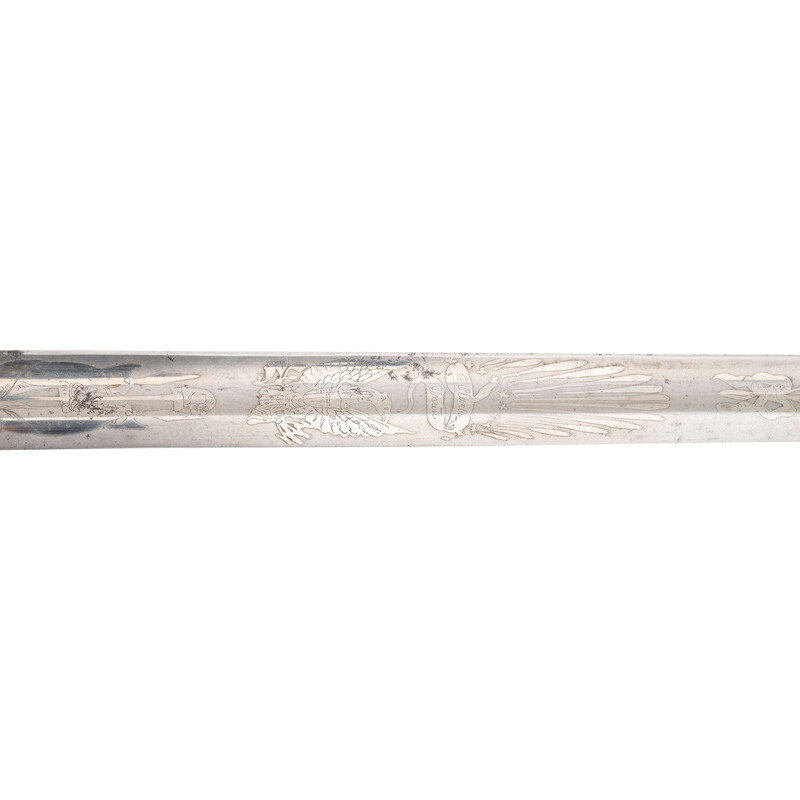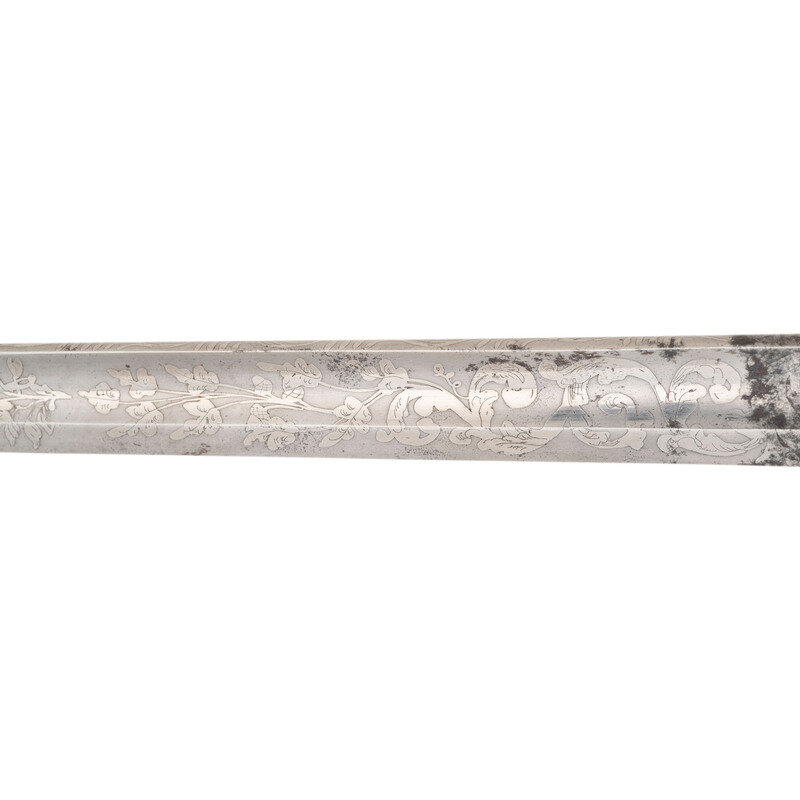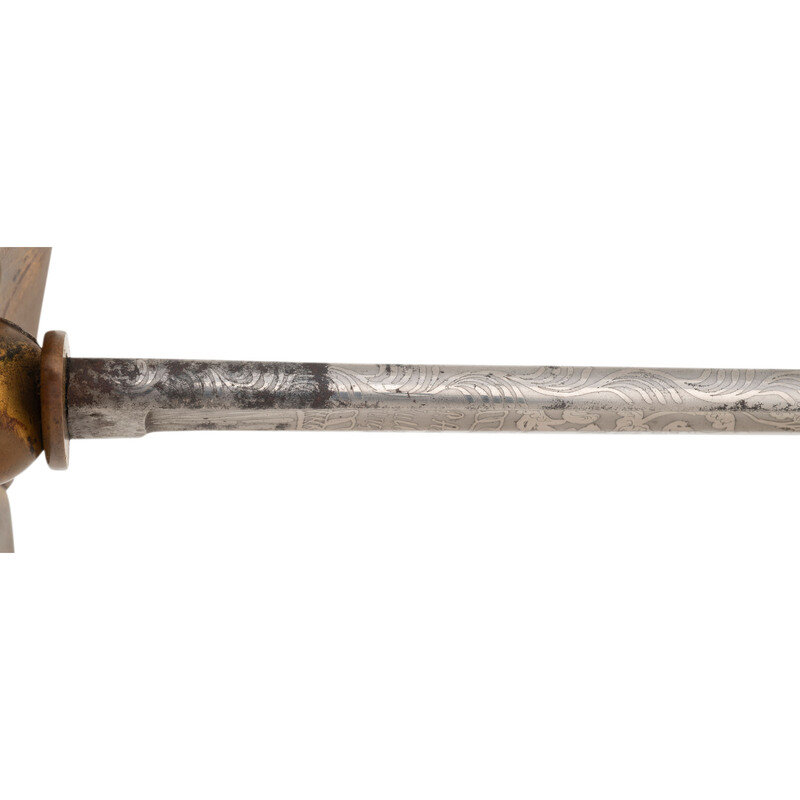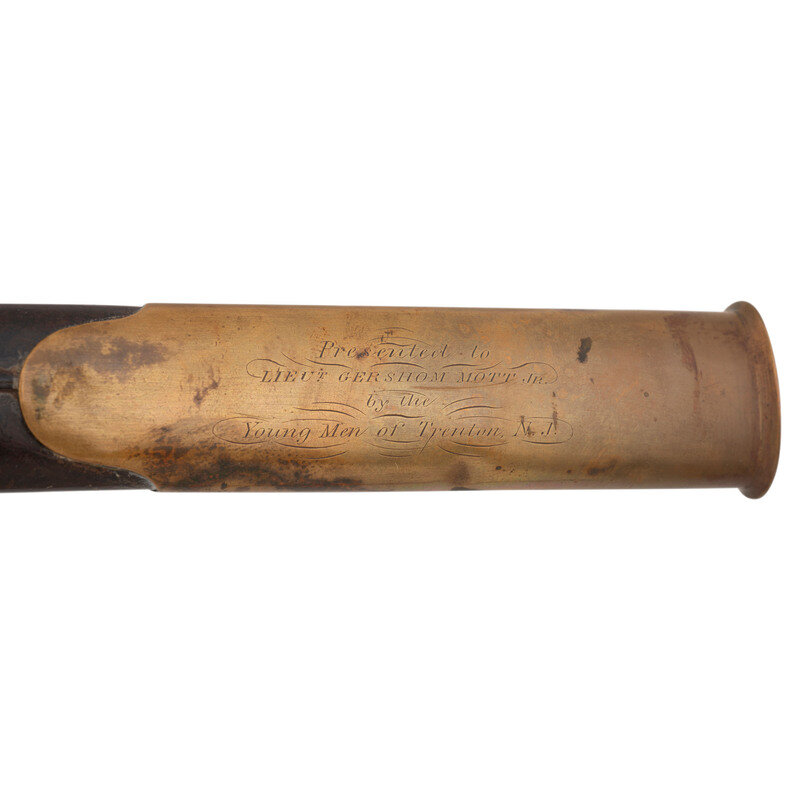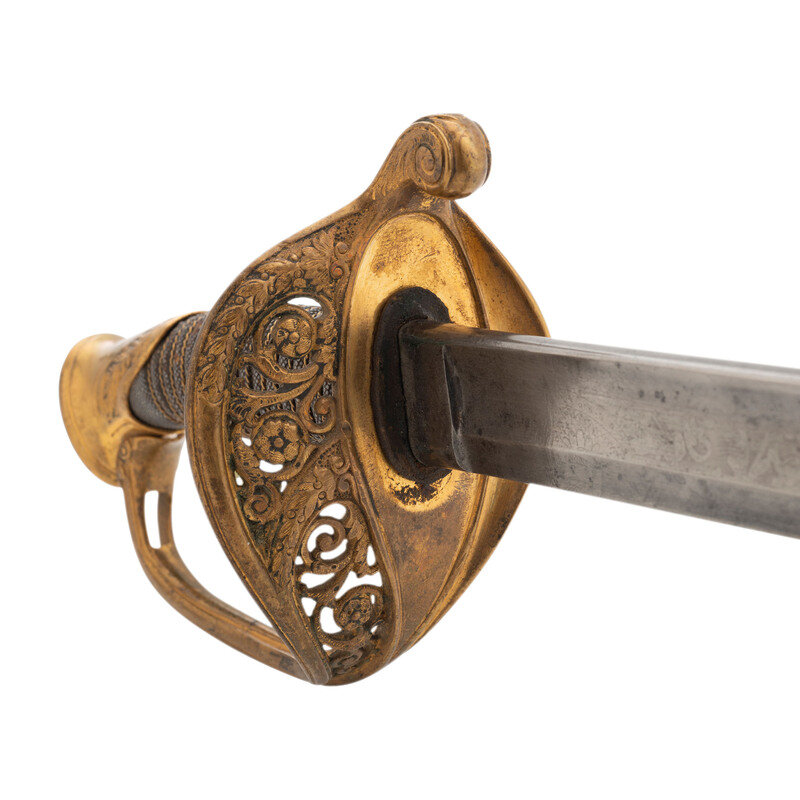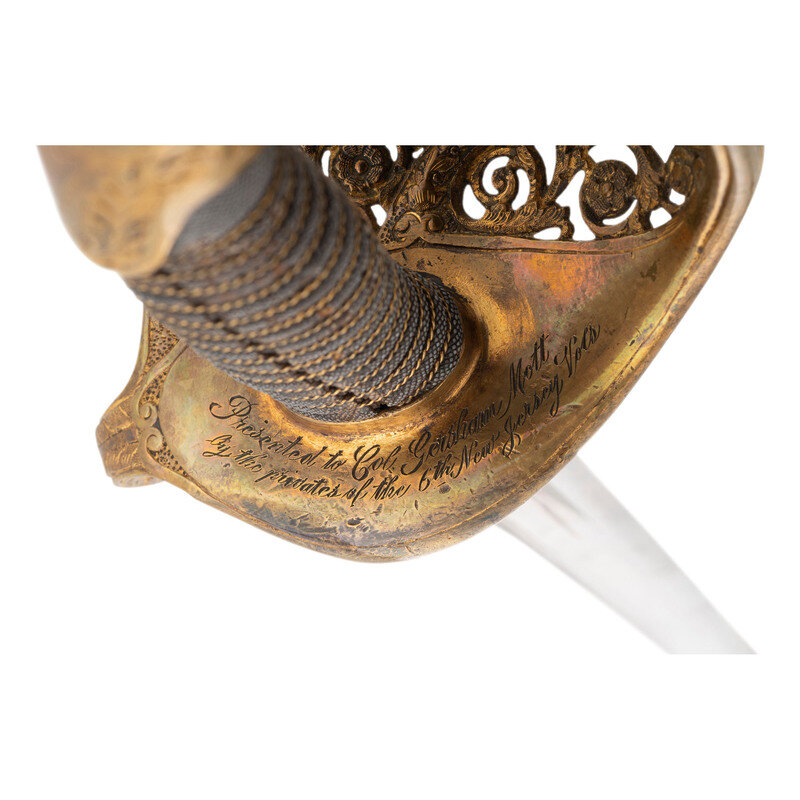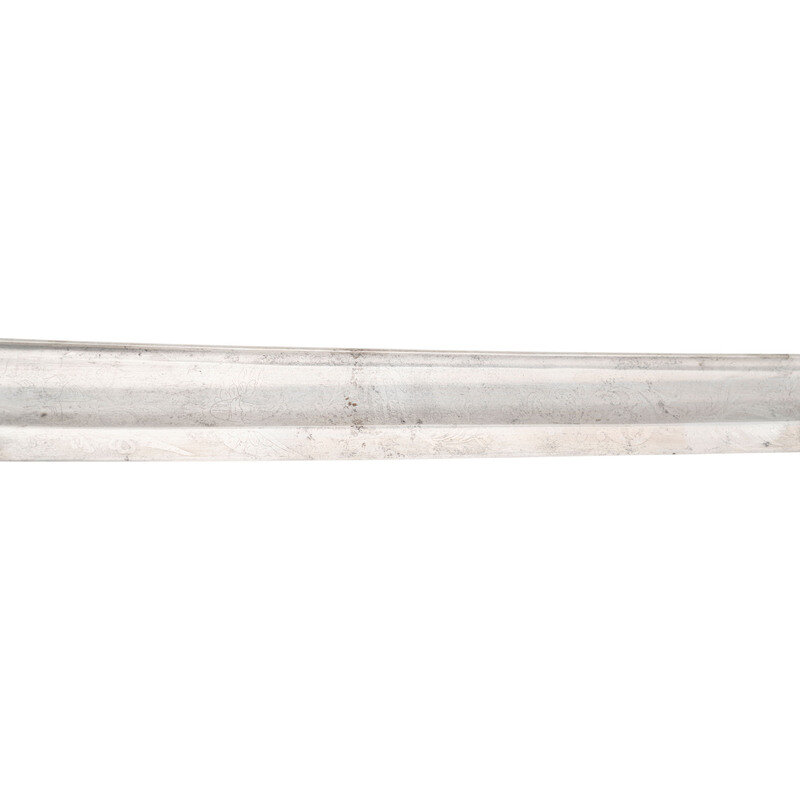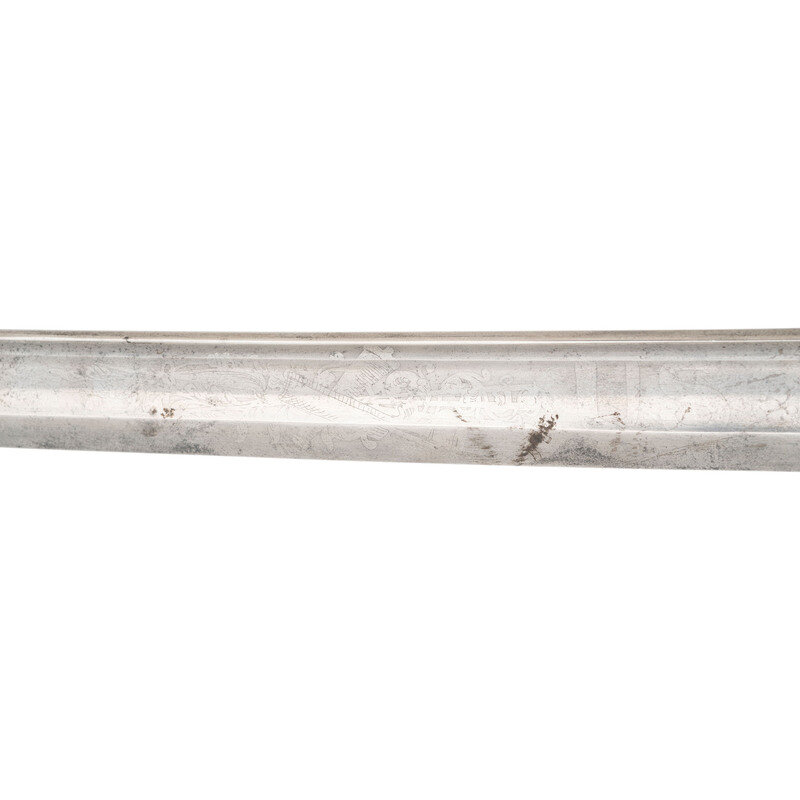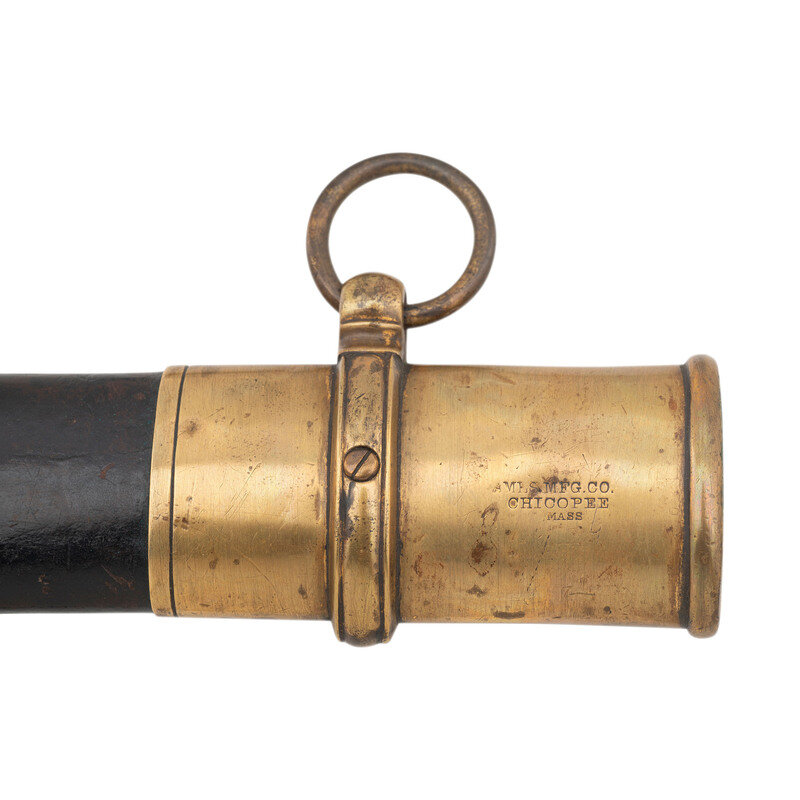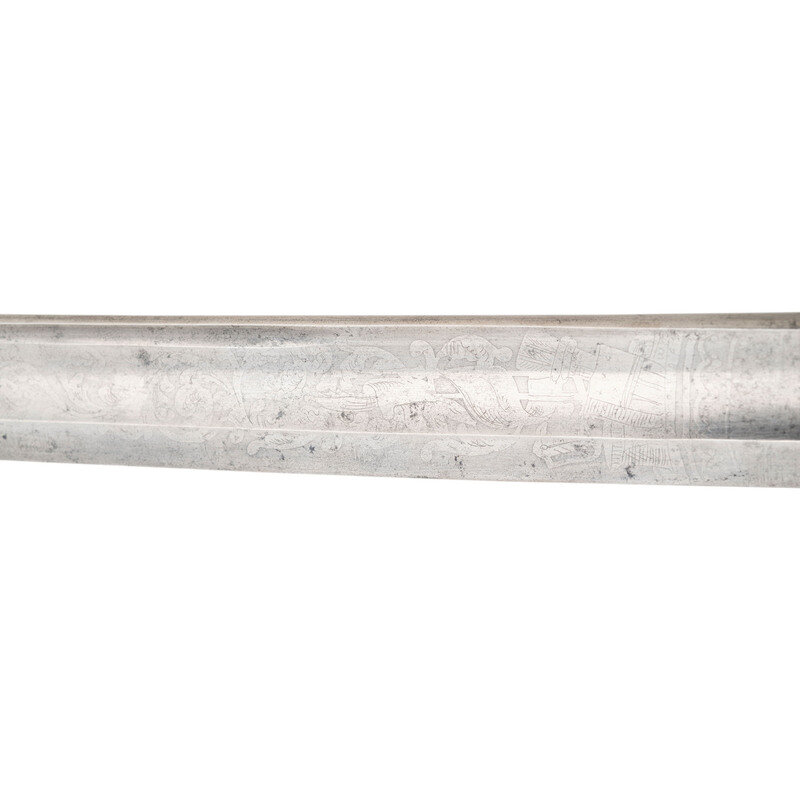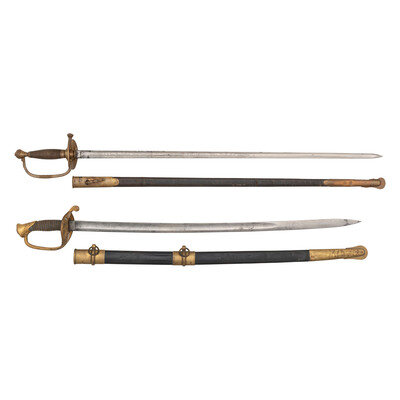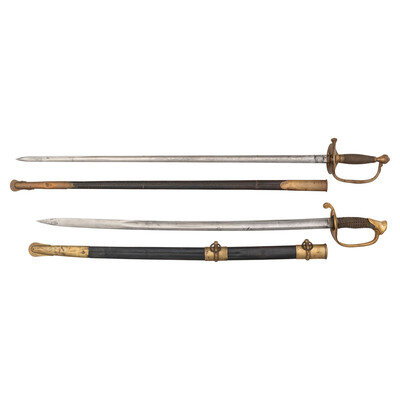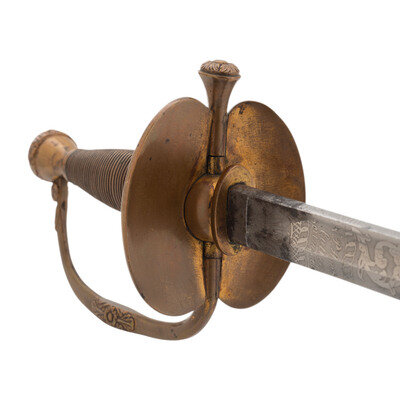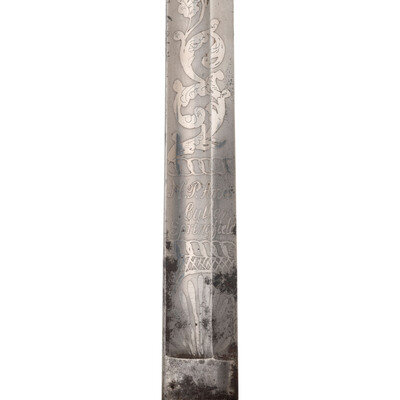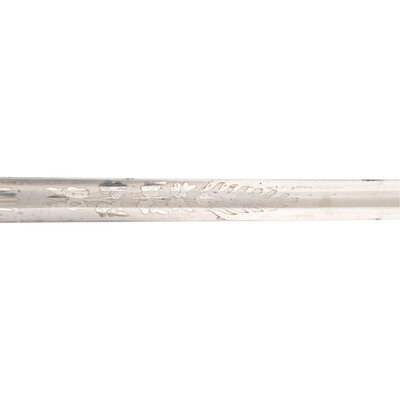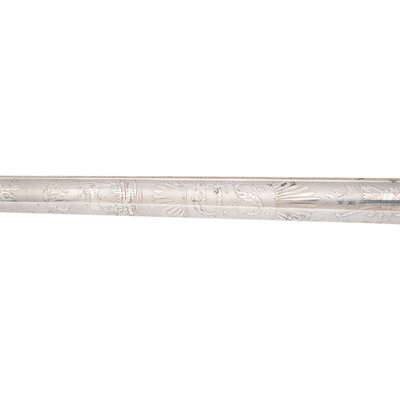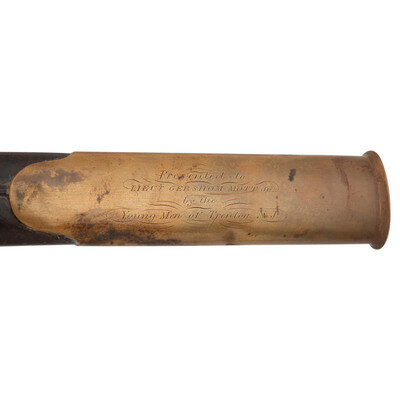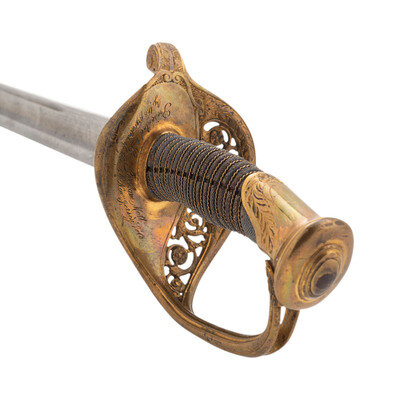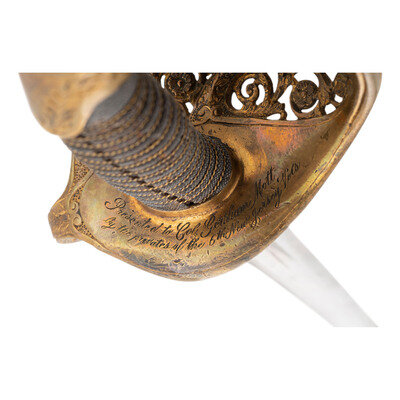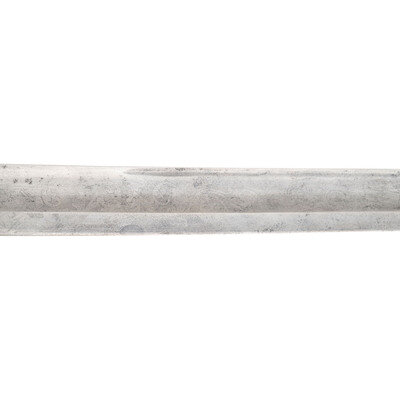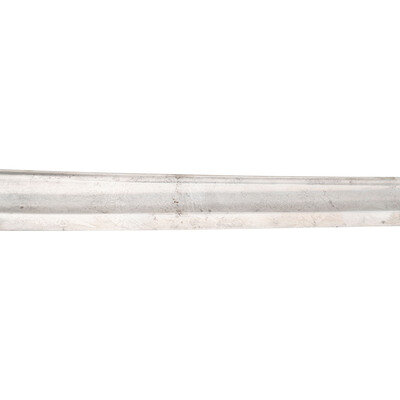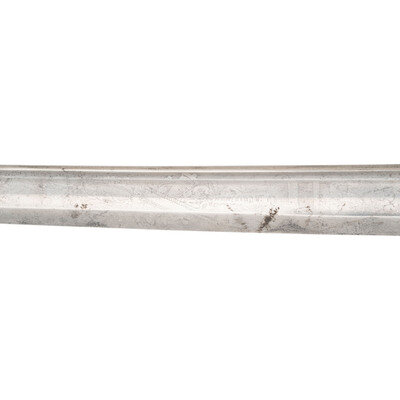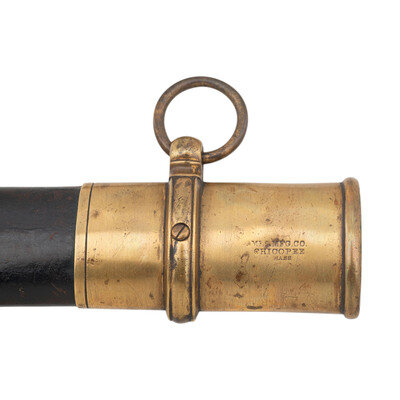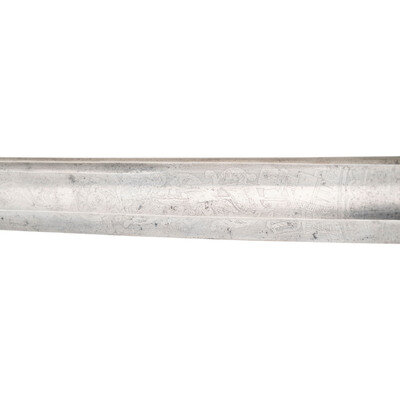Lot 60
Two Presentation Swords to Lieutenant and Colonel (General) Gershom Mott, An Ames 1840 Officers Sword and an Ames 1850 Foot Officers Sword
Sale 1353 - Arms, Armor and Militaria
May 1, 2024
10:00AM ET
Live / Cincinnati
Own a similar item?
Estimate
$5,000 -
7,000
Price Realized
$4,500
Sold prices are inclusive of Buyer’s Premium
Lot Description
Two Presentation Swords to Lieutenant and Colonel (General) Gershom Mott, An Ames 1840 Officers Sword and an Ames 1850 Foot Officers Sword
American Civil War
1.) Ames Model 1840 Officers Sword. 32.25" single edged straight spear point blade with a nearly full-length stopped median fuller. 38.75" in overall length with a 6" cast brass hilt with folding clamshell counter guard and knuckle bow. Hilt with simple cast foliate decorations and an urn pommel. Etched blade with foliate, patriotic and marital themes and marked N.P. Ames/Cutler/Springfield in three lines on the obverse near the ricasso. The sword is accompanied by a brass mounted leather scabbard with the reverse of the throat engraved: Presented to/LIEUT. GERSHOM MOTT JR./by the/Young Men of Trenton, NJ.
2.) Ames Model 1850 Foot Officers Sword. 30.25" single edged, slightly curved spear point blade with 21" stopped median fuller. 36.25" in overall length with a 6" hilt with a gilt brass cast guard with foliate decorations and a knuckle bow. Grooved wooden grip covered in shagreen with 15 wraps of twisted wire. Blade with weak etching that features flowing foliate themes as well as patriotic and martial images. The etched Ames mark is nearly obscured by wear. The inside of the guard is deeply hand engraved: Presented to Col. Gershom Mott/By the privates of the 6th New Jersey Vols. The sword is accompanied by a gilt brass mounted leather scabbard with the typical Ames marking on he reverse of the throat. The swords are accompanied by a large binder of information about and research regarding Mott.
Gershom Mott Jr. (1822-1884) was born in Lamberton, NJ near Trenton on April 7, 1822. Mott was educated at the Trenton Academy and by the age of 14 was working in New York as a dry goods sales clerk. With the outbreak of the Mexican-American War, Mott volunteered and was commissioned a lieutenant, serving with the 10th US Infantry Regiment which had been authorized for one year's service during the war. Mott served from April 23, 1847 to August 22, 1848. The following August Mott married Elizabeth Smith and the couple had one child. Mott worked a variety of jobs in New Jersey after the war including with the Delaware & Raritan Canal Company and Bordentown Bank.
With the coming of the Civil War Mott was commissioned the lieutenant colonel of the the 5th New Jersey Volunteer Infantry Regiment on August 23, 1861. The regiment saw its first serious combat during the Peninsula Campaign in the Spring and early Summer of 1862, fighting at the Siege of Yorktown and Williamsburg. On May 7, 1862 Mott was promoted to colonel and given command of the 6th New Jersey Infantry regiment. Mott led the regiment at Fair Oaks and during the Seven Days Before Richmond as well as during Pope's Campaign in Northern Virginia which culminated at 2nd Manassas where Mott was wounded. Following that battle, Mott was promoted on September 7, 1862 to Brigadier General and given a brigade to command. He was wounded in action at Chancellorsville in May of 1863 and led a division at in Hancock's Corps at the Wilderness and a brigade at Cold Harbor. Later in 1864 he returned to division command under Hancock and was breveted to the rank of Major General on August 1, 1864 for his distinguished service. He was wounded for the third time during the war at Amelia Springs, VA on April 6, 1865. His brevet to Major General was made a full commission of that rank in the US Volunteers on May 26, 1865. He served as a member of the military commission that tired Colonel Henry Wirz, the notorious commander of the Confederate prisoner of war camp at Andersonville and resigned from the service in 1866. After the war he held a variety of positions in railroads and banking and died on May 29, 1884 in New York City.
2.) Ames Model 1850 Foot Officers Sword. 30.25" single edged, slightly curved spear point blade with 21" stopped median fuller. 36.25" in overall length with a 6" hilt with a gilt brass cast guard with foliate decorations and a knuckle bow. Grooved wooden grip covered in shagreen with 15 wraps of twisted wire. Blade with weak etching that features flowing foliate themes as well as patriotic and martial images. The etched Ames mark is nearly obscured by wear. The inside of the guard is deeply hand engraved: Presented to Col. Gershom Mott/By the privates of the 6th New Jersey Vols. The sword is accompanied by a gilt brass mounted leather scabbard with the typical Ames marking on he reverse of the throat. The swords are accompanied by a large binder of information about and research regarding Mott.
Gershom Mott Jr. (1822-1884) was born in Lamberton, NJ near Trenton on April 7, 1822. Mott was educated at the Trenton Academy and by the age of 14 was working in New York as a dry goods sales clerk. With the outbreak of the Mexican-American War, Mott volunteered and was commissioned a lieutenant, serving with the 10th US Infantry Regiment which had been authorized for one year's service during the war. Mott served from April 23, 1847 to August 22, 1848. The following August Mott married Elizabeth Smith and the couple had one child. Mott worked a variety of jobs in New Jersey after the war including with the Delaware & Raritan Canal Company and Bordentown Bank.
With the coming of the Civil War Mott was commissioned the lieutenant colonel of the the 5th New Jersey Volunteer Infantry Regiment on August 23, 1861. The regiment saw its first serious combat during the Peninsula Campaign in the Spring and early Summer of 1862, fighting at the Siege of Yorktown and Williamsburg. On May 7, 1862 Mott was promoted to colonel and given command of the 6th New Jersey Infantry regiment. Mott led the regiment at Fair Oaks and during the Seven Days Before Richmond as well as during Pope's Campaign in Northern Virginia which culminated at 2nd Manassas where Mott was wounded. Following that battle, Mott was promoted on September 7, 1862 to Brigadier General and given a brigade to command. He was wounded in action at Chancellorsville in May of 1863 and led a division at in Hancock's Corps at the Wilderness and a brigade at Cold Harbor. Later in 1864 he returned to division command under Hancock and was breveted to the rank of Major General on August 1, 1864 for his distinguished service. He was wounded for the third time during the war at Amelia Springs, VA on April 6, 1865. His brevet to Major General was made a full commission of that rank in the US Volunteers on May 26, 1865. He served as a member of the military commission that tired Colonel Henry Wirz, the notorious commander of the Confederate prisoner of war camp at Andersonville and resigned from the service in 1866. After the war he held a variety of positions in railroads and banking and died on May 29, 1884 in New York City.
From the Collection of George Oldenbourg
Condition Report
Contact Information
Auction Specialists
